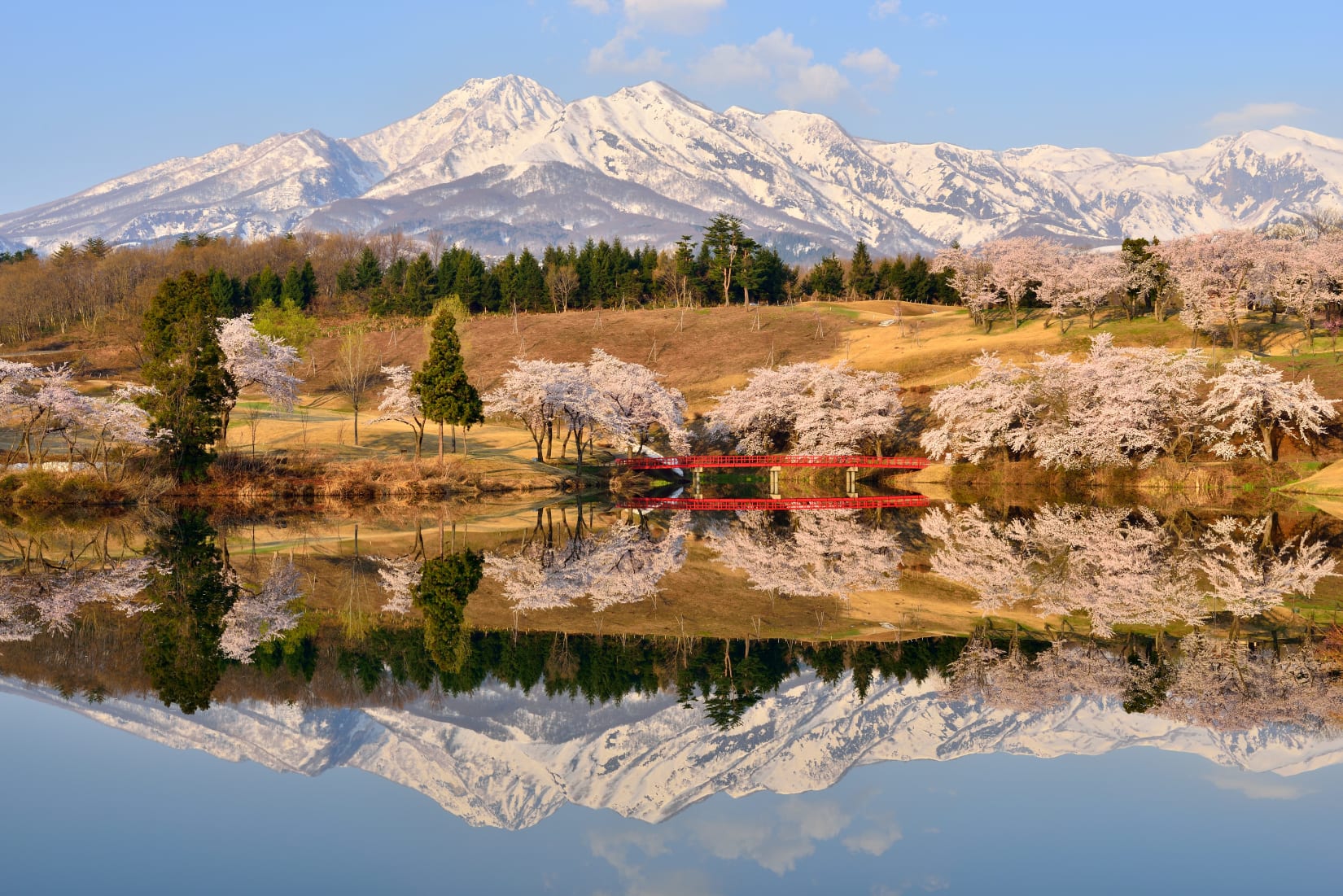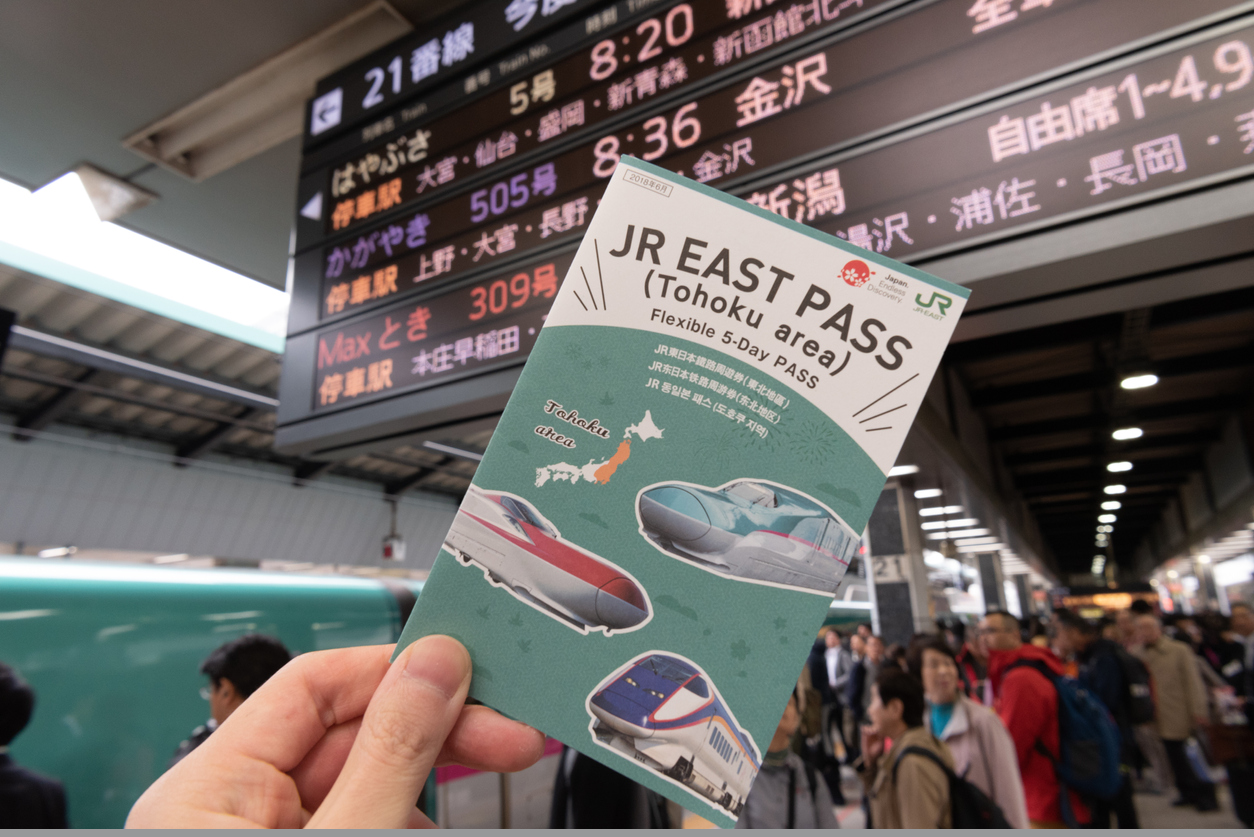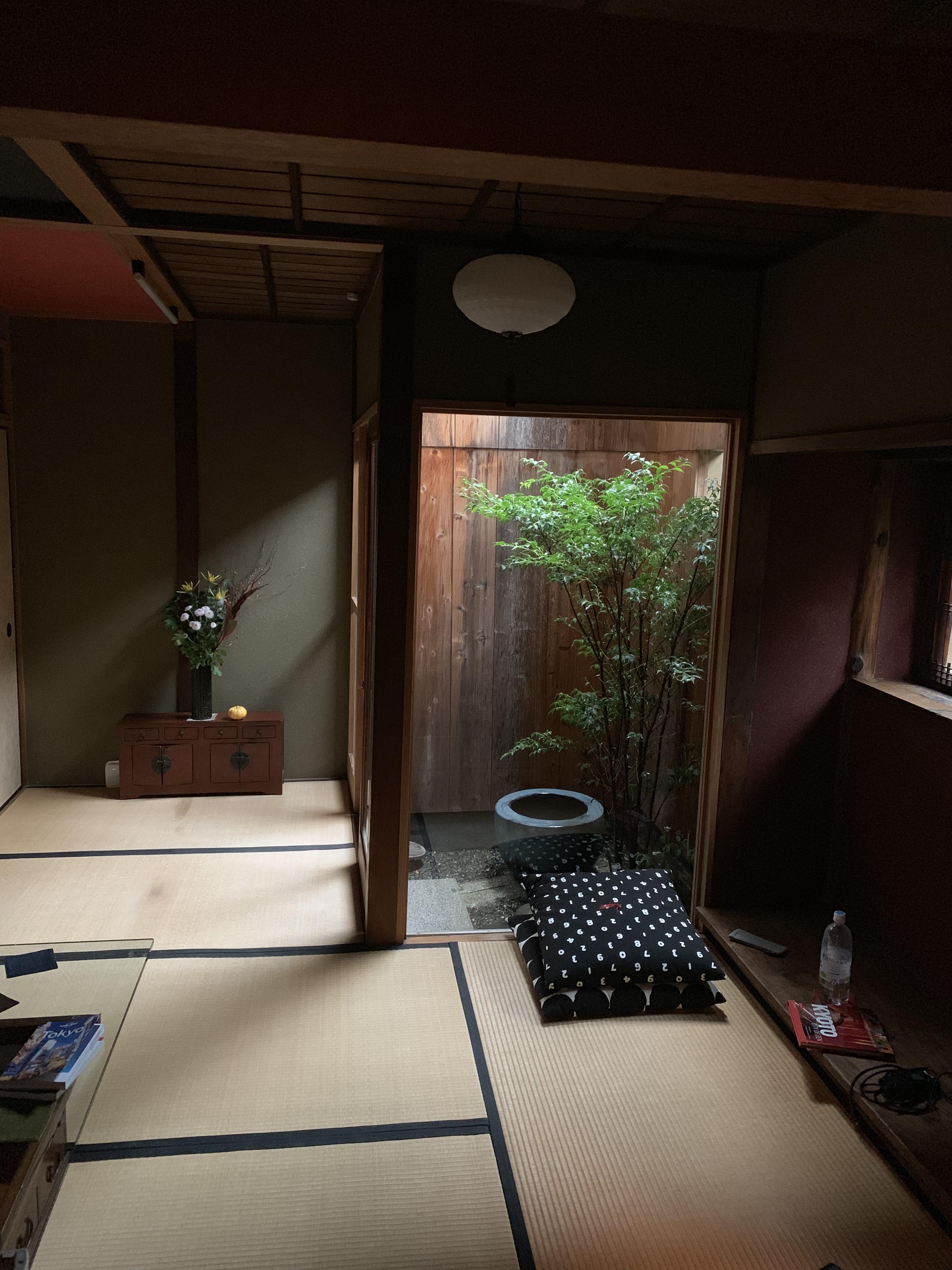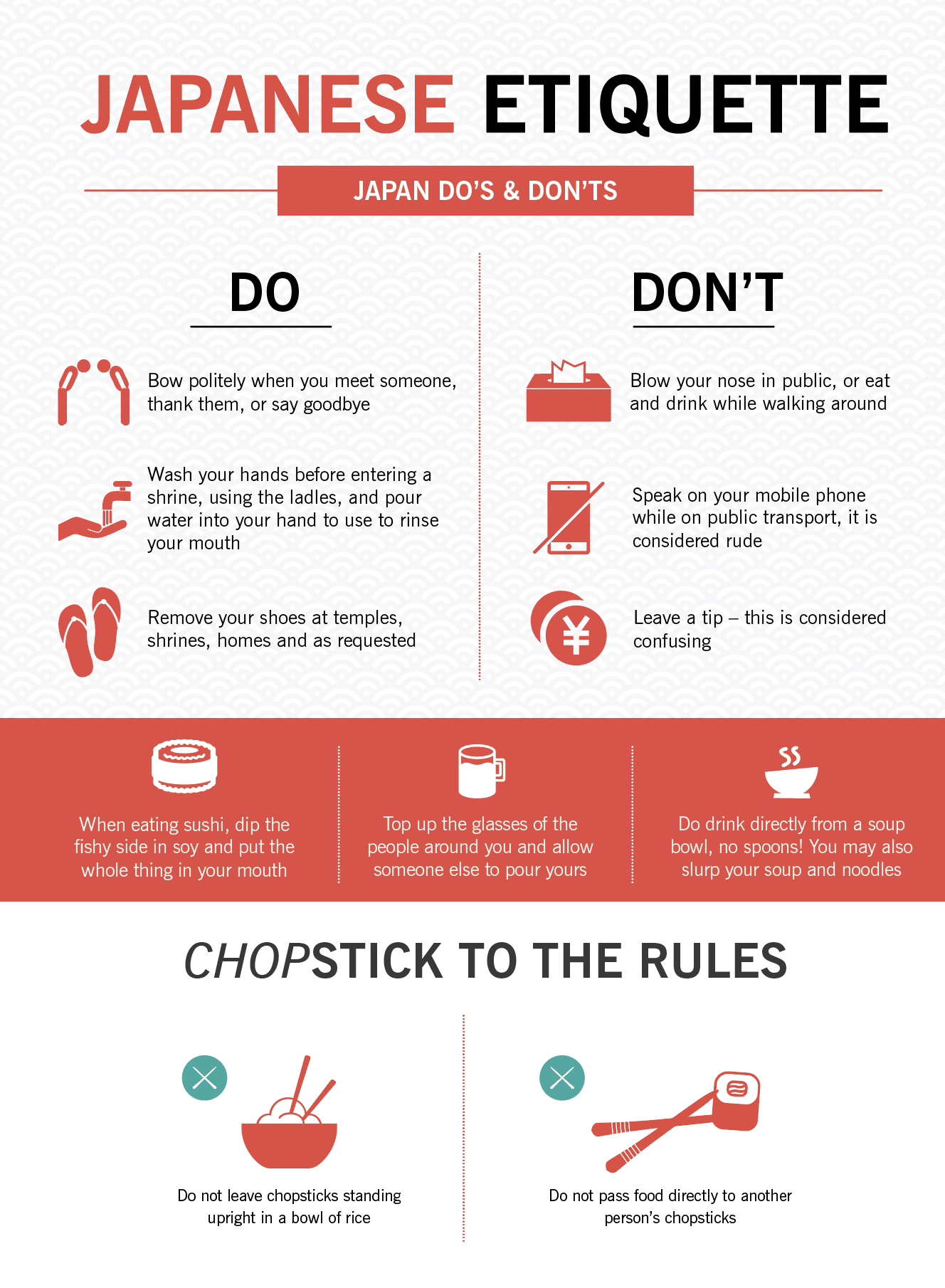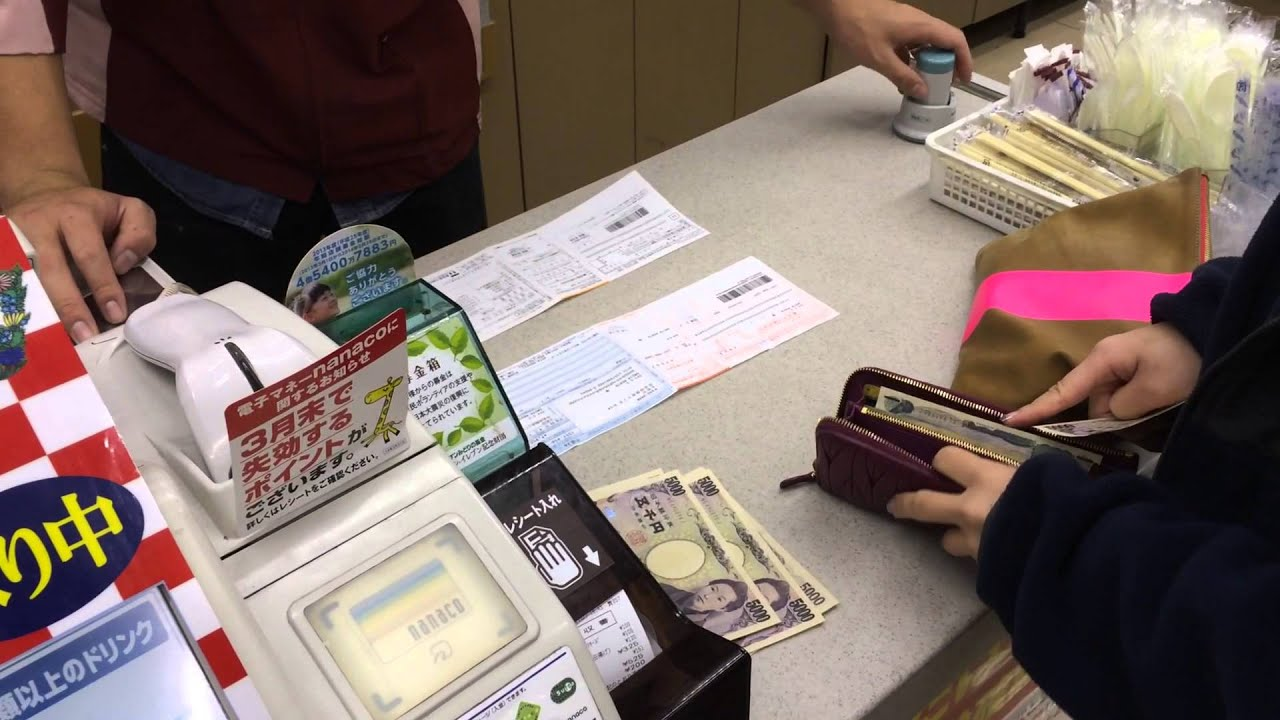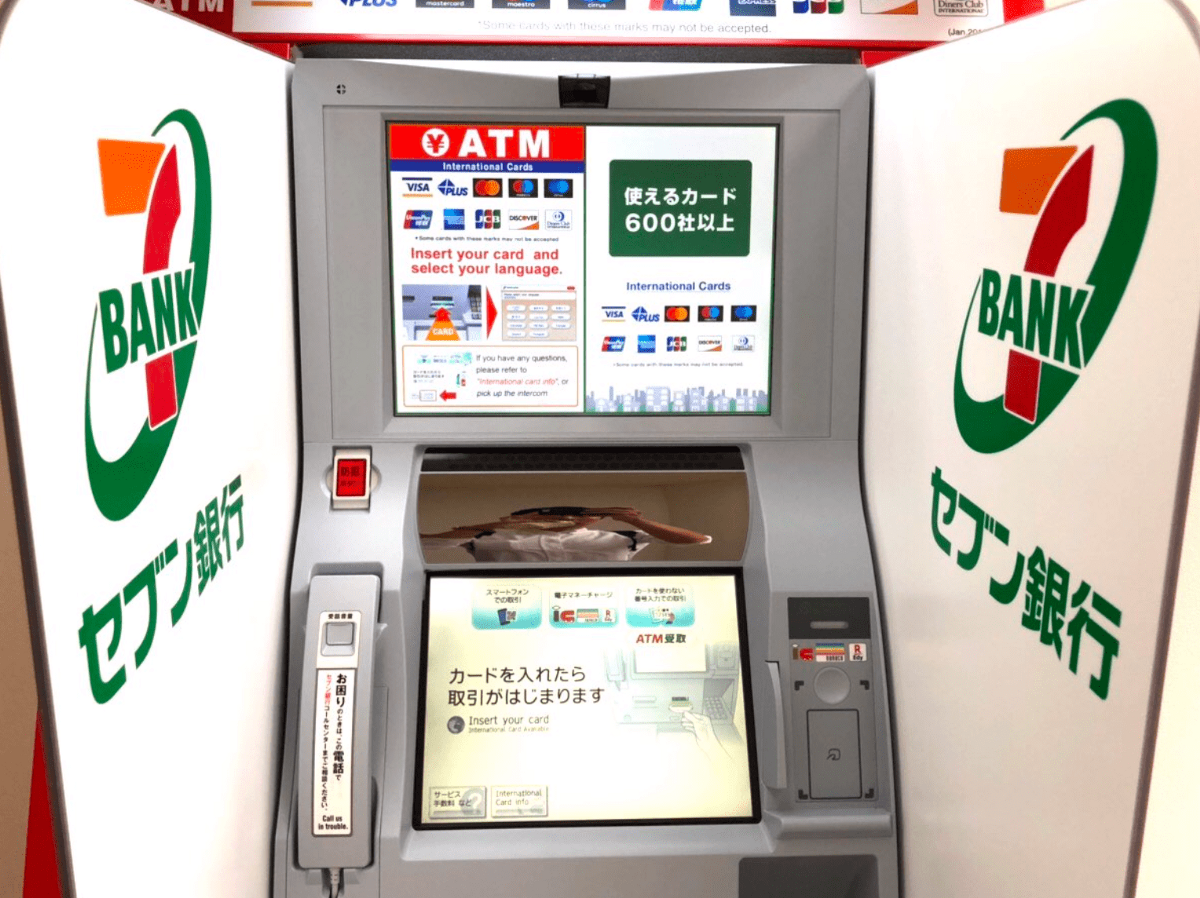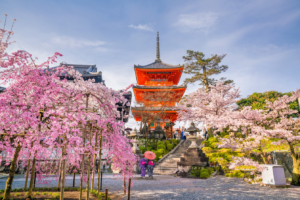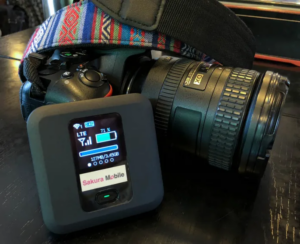How do you plan a trip to Japan?
Planning a Japan trip involves setting a budget, choosing the best time to visit based on weather and events, creating an itinerary including must-see attractions like Tokyo, Kyoto, and Osaka, booking accommodations in advance due to high demand, and familiarizing yourself with Japanese etiquette and culture.
- Determine the best season for your visit to Japan, such as the cherry blossom season in spring or the autumn leaves season in October.
- Calculate an ideal trip duration based on your interests and the number of cities and attractions you want to visit.
- Craft your dream itinerary by choosing must-visit destinations like Tokyo, Kyoto, and Mount Fuji, as well as exploring hidden gems beyond the tourist trail.
- Plan your transportation by considering options like the Japan Rail Pass or metro passes, and learn about efficient and economical travel tips.
- Choose the right accommodation for your stay in Japan, whether it’s a hotel, ryokan (traditional Japanese inn), or Airbnb.
- Indulge in Japan’s gastronomy by experiencing Japanese cuisine and reserving a spot at must-visit restaurants.
- Navigate Japanese cultural etiquette and avoid common tourist faux pas.
- Prepare for your trip by gathering essential documents, getting travel insurance, and packing accordingly.
- Plan your budget by estimating daily expenses and considering money management options like cash and credit cards.
- Answer frequently asked questions about planning a Japan trip, such as when to start planning and if English is sufficient for travel.
- Summarize the key points of the blog and encourage readers to plan their unforgettable Japan trip.
Essential Planning Steps for Your Japan Journey
Planning a trip to Japan requires careful consideration of several essential steps. These steps include determining the best season for your visit, calculating an ideal trip duration, crafting your dream itinerary, arranging transportation, choosing accommodation, indulging in culinary adventures, navigating cultural etiquette, preparing necessary documents, budgeting for your trip, and answering frequently asked questions. By following these planning steps, you can ensure a smooth and unforgettable journey through Japan.
Determining the Best Season to Plan a Trip to Japan
When planning your trip to Japan, it’s important to consider the best season for your visit. Each season offers its own unique experiences and attractions. The most popular times to visit are during the cherry blossom season in spring (March-April) and the autumn leaves season in October. However, other seasons also have their charm. Here are some highlights of each season:
- Cherry blossom season (March-April): Experience the beauty of sakura (cherry blossoms) in full bloom and enjoy hanami (flower viewing) picnics in parks.
- Summer (August): Take part in colorful festivals like Obon and enjoy fireworks displays.
- Autumn (October-November): Admire the vibrant hues of autumn leaves (koyo) and visit popular spots like Kyoto and Nikko.
These seasons attract large crowds and higher prices, so consider visiting in less busy times like early spring or late summer for a more relaxed experience.
Calculating an Ideal Trip To Japan Duration
The ideal trip duration for your Japan journey depends on your interests and the number of cities and attractions you want to visit. While it’s possible to see some highlights in a week, a longer duration allows for a more immersive experience. Here are some considerations when calculating your trip duration:
- Enough time for each destination: Plan to spend at least a full day in each city or major attraction to explore its main highlights.
- Day trips: Factor in additional days for day trips to nearby destinations, such as visiting Nara or Hiroshima from Kyoto.
- The entire trip: Consider the time needed for travel between cities and the overall pace of your journey. A minimum of two weeks is recommended for a more comprehensive trip.
By taking these factors into account, you can ensure that you have enough time to fully enjoy and appreciate all that Japan has to offer.
Crafting Your Dream Itinerary: Cities and Attractions
Crafting your dream itinerary for your Japan trip involves choosing the cities and attractions you want to visit. Japan offers a diverse range of destinations, from bustling metropolises to tranquil countryside towns. Some must-visit cities include Tokyo, Kyoto, Osaka, Hiroshima, and Nara. Each city has its own unique charm and attractions, such as Tokyo’s vibrant cityscape and Kyoto’s temples. Additionally, consider including popular attractions like Mount Fuji, Universal Studios Japan, and UNESCO World Heritage sites. By carefully selecting the cities and attractions that align with your interests, you can create an unforgettable itinerary for your Japan journey.
Must-Visit Destinations from Tokyo to Kyoto
When you plan a trip to Japan, certain destinations are a must-visit to truly experience the country’s rich culture and history. Here are some essential destinations from Tokyo to Kyoto:
- Tokyo: Explore the vibrant capital city, visit iconic sites like the Imperial Palace and Tokyo Tower, and indulge in culinary delights at Tsukiji Fish Market. Don’t forget Disney Japan.
- Kyoto: Immerse yourself in traditional Japan with visits to historic temples, such as Kinkaku-ji (Golden Pavilion) and Fushimi Inari Taisha, and experience a traditional tea ceremony.
- Universal Studios Japan, Osaka: Enjoy thrilling rides and meet your favorite characters at this popular theme park.
- Mount Fuji: Take a day trip from Tokyo to witness the majestic beauty of Japan’s highest mountain.
- Hiroshima: Learn about the city’s poignant history at the Peace Memorial Park and visit the nearby Miyajima Island with its iconic floating torii gate.
- UNESCO World Heritage sites: Visit cultural and natural sites designated by UNESCO, such as Himeji Castle and Shirakawa-go village.
These destinations offer a mix of cultural, historical, and entertainment experiences that showcase the best of Japan.
Hidden Gems: Exploring Beyond the Tourist Trail
While popular tourist destinations offer incredible experiences, exploring beyond the tourist trail can lead to hidden gems and unique discoveries. Consider adding these hidden gems to your Japan itinerary:
- Okinawa: Discover the beautiful beaches and unique culture of this tropical paradise in the south of Japan.
- Takayama: Immerse yourself in the traditional atmosphere of this historic town known for its well-preserved streets and stunning mountain scenery.
- Kanazawa: Explore the rich cultural heritage of Kanazawa through its traditional tea houses, samurai districts, and beautiful Kenroku-en Garden.
- Hakone: Experience the beauty of nature in Hakone with its hot springs, scenic lake, and iconic views of Mount Fuji.
- Old towns: Take a step back in time by visiting the historic old towns of Japan, such as Kurashiki, Kawagoe, and Takayama, where traditional architecture and charm still remain.
By venturing off the beaten path, you can discover lesser-known destinations that offer a different perspective on Japanese culture and scenery.
Transportation Tips: Getting Around Japan with Ease

Navigating transportation in Japan is essential for a smooth and efficient trip. Consider these transportation tips to get around Japan with ease:
- Choosing between Japan Rail Pass and Metro Passes: Evaluate whether a Japan Rail Pass or metro passes are more suitable for your itinerary, depending on the regions you plan to visit and the duration of your trip.
- Tips for efficient and economical travel: Utilize Google Maps for navigation, rent a pocket Wi-Fi or buy a SIM card for internet connectivity, and consider using a Suica or Pasmo card for easy payment on trains and buses.
- Taking advantage of the bullet train: Experience the iconic Shinkansen (bullet train) for fast and comfortable travel between cities.
- Airport transportation: Plan your transportation from Narita or Haneda airports to your accommodation in Tokyo using options like the Narita Express or airport shuttles.
By familiarizing yourself with these transportation tips, you can navigate Japan’s extensive transportation network with confidence and convenience.
Choosing Between Japan Rail Pass and Metro Passes
When you plan a trip to Japan, choosing the right transportation pass can significantly impact your travel experience. Here is a comparison between the Japan Rail Pass (JR Pass) and metro passes:
Table
|
Transportation Pass |
Coverage |
Validity |
Pros |
Cons |
|
Japan Rail Pass (JR Pass) |
Nationwide coverage |
7, 14, or 21 days |
Unlimited travel on JR trains, including bullet trains |
Expensive for short trips, not valid on all transportation modes |
|
Metro Passes |
Local coverage in specific regions |
1, 2, or 3 days |
Unlimited travel on metro lines and selected buses |
Limited to specific regions, not valid on bullet trains |
Consider the areas you plan to visit, the duration of your trip, and the cost-effectiveness of each pass before making a decision. If you plan to travel extensively throughout Japan, the Japan Rail Pass may be a more suitable option, while metro passes are ideal for exploring specific regions.
Tips for Efficient and Economical Travel
To make your travel in Japan efficient and economical, consider these tips:
- Use Google Maps: Download the offline map of the area you are visiting and use it for navigation. It provides accurate directions for public transportation.
- Rent a pocket Wi-Fi or buy a SIM card: Stay connected throughout your trip by renting a pocket Wi-Fi or buying a SIM card for internet access on your phone.
- Take advantage of free Wi-Fi: Many train stations, convenience stores, and cafes offer free Wi-Fi, so you can save on data usage.
- Consider transportation passes: Look into transportation passes like the Suica or Pasmo card, which allow for easy payment on trains and buses and often offer discounts on fares.
- Use ATMs at 7-Eleven: 7-Eleven ATMs accept international cards and are a convenient option for withdrawing cash, as they are widely available throughout Japan. Book mark this handy ATM finder hosted by 711 here.
By implementing these tips, you can navigate Japan efficiently and keep your travel expenses under control.
Accommodation Advice: Where to Stay in Japan
Choosing the right accommodation is crucial for a comfortable and enjoyable stay in Japan. Consider these factors when deciding where to stay:
- Hotel rooms: Opt for hotels if you prefer the convenience and amenities offered by traditional accommodations.
- Ryokans: Experience Japanese hospitality and customs by staying in a traditional ryokan, complete with tatami mat rooms, futon beds, and communal baths.
- Airbnb: Renting an Airbnb provides a more local experience and can be a cost-effective option for families or larger groups.
Take into account your budget, preferred location, and desired level of comfort when selecting your accommodation. Research customer reviews and compare prices to ensure the best possible stay.
Comparing Hotels, Ryokans, and Airbnb Options
When deciding between hotels, ryokans, and Airbnb options, consider the following factors:
- Hotel rooms: Hotels offer a wide range of amenities, such as on-site restaurants, concierge services, and room service. They are suitable for travelers who prioritize convenience and comfort.
- Ryokans: Ryokans provide an authentic Japanese experience with traditional tatami mat rooms, futon beds, and communal baths. They are ideal for those seeking cultural immersion and a unique stay.
- Airbnb: Renting an Airbnb allows for a more local experience, as you stay in a private home or apartment. It can be a budget-friendly option, especially for families or larger groups.
Consider your preferences, budget, and desired level of immersion when choosing between these accommodation options. Research customer reviews and compare prices to find the best fit for your Japan trip.
Booking Strategies for the Best Deals
To secure the best deals on accommodations in Japan, consider these booking strategies:
- Book in advance: Popular hotels and ryokans can fill up quickly, especially during peak seasons like cherry blossom season. Book your accommodations well in advance to secure your preferred dates and rates.
- Check department store websites: Many department stores in Japan have travel agencies that offer special promotions and packages. Check their websites for exclusive deals on accommodations.
- Use credit card perks: Some credit cards offer benefits like discounted rates or additional rewards for booking accommodations. Check if your credit card has any partnerships or offers related to travel in Japan.
By implementing these booking strategies, you can find the best deals and maximize your budget for accommodations in Japan.
Exploring Japanese Cuisine: Enjoying the Flavors of Japan
No trip to Japan is complete without indulging in its world-renowned cuisine. Immerse yourself in Japanese gastronomy by savoring traditional dishes and exploring local culinary delights. Consider these tips for a memorable culinary experience:
- A guide to Japanese cuisine: Familiarize yourself with popular dishes like sushi, ramen, tempura, and matcha. Experiment with different flavors and textures to fully appreciate the diversity of Japanese food.
- Reserving your spot at must-visit restaurants: Some popular restaurants require reservations, especially for specialty cuisines like sushi or kaiseki. Plan ahead and book your dining experiences in advance.
- Exploring local food scenes: Venture beyond tourist areas to discover the local food scenes in each city. Explore local markets, try street food, and seek out hidden gems recommended by locals.
By embracing Japan’s gastronomy, you can embark on a culinary adventure that will leave lasting memories of your trip.
A Guide to Japanese Cuisine: What to Eat and Where
Japanese cuisine is renowned for its fresh ingredients, delicate flavors, and artful presentation. Here are some must-try dishes and where to find them:
- Sushi: Indulge in the world-famous sushi at top-notch sushi restaurants in Tokyo’s Tsukiji Fish Market or at sushi-go-round conveyor belt restaurants.
- Ramen: Satisfy your noodle cravings with a steaming bowl of ramen. Each region in Japan has its own unique style, such as miso ramen in Hokkaido or tonkotsu ramen in Fukuoka.
- Tempura: Enjoy crispy and lightly battered tempura at specialized tempura restaurants or traditional izakayas.
- Matcha: Experience the Japanese tea ceremony and savor matcha, a powdered green tea renowned for its health benefits and distinctive flavor.
- Street food: Explore local food stalls and markets to try popular street food like takoyaki (octopus balls), yakitori (grilled skewers), and okonomiyaki (savory pancakes).
These dishes represent just a fraction of the incredible variety of Japanese cuisine. Don’t be afraid to venture out and try new flavors and dishes during your trip.
Reserving Your Spot at Must-Visit Restaurants
To secure a spot at must-visit restaurants in Japan, it’s important to make reservations in advance. Here are some tips for reserving your spot:
- Research and plan ahead: Identify the restaurants you want to visit and check if they require reservations. Research their reservation policies and opening hours.
- Contact the restaurant directly: Call or email the restaurant to make a reservation. Be prepared to communicate any dietary restrictions or preferences.
- Use reservation platforms: Some restaurants use reservation platforms like TableCheck or Gurunavi. Check if the restaurant has partnered with any reservation platforms and make your booking through them.
- Utilize QR codes and apps: Some restaurants provide QR codes or mobile apps for reservations. Download the app or scan the QR code to make your reservation.
By reserving your spot in advance, you can ensure a seamless dining experience and avoid disappointment at popular restaurants.
When visiting Japan, it’s important to be aware of the cultural etiquette to show respect and avoid unintentional faux pas. Consider these dos and don’ts for navigating Japanese cultural etiquette:
- Essential manners for respectful interaction: Practice common courtesies, such as bowing when greeting or thanking someone, removing shoes in certain places, and using chopsticks correctly.
- Avoiding common tourist faux pas: Familiarize yourself with cultural norms, such as not tipping, not eating while walking, and refraining from loud or disruptive behavior in public places.
By being mindful and respectful of Japanese customs, you can enhance your cultural immersion and create positive interactions with locals.
Essential Manners for Respectful Interaction
Respectful interaction is an essential aspect of Japanese culture. Here are some essential manners to keep in mind when interacting with locals in Japan:
- Bowing: Bowing is a traditional form of greeting and showing respect. When meeting someone, bow slightly while maintaining eye contact.
- Removing shoes: In many places, such as homes, traditional ryokans, and some restaurants, it is customary to remove your shoes before entering. Look for signs or follow the lead of others.
- Using chopsticks: When using chopsticks, avoid sticking them upright in your rice bowl. Instead, place them on the chopstick rest or parallel to the edge of the table.
- Politeness: Use polite language and honorifics when interacting with locals, such as saying “arigato gozaimasu” (thank you) and “sumimasen” (excuse me).
- Respect personal space: Japanese people value personal space and may stand a little farther apart during conversations. Follow their lead and avoid invading personal space.
By practicing these essential manners, you can show respect and create positive interactions with the locals during your Japan trip.
Avoiding Common Tourist Faux Pas
To avoid common tourist faux pas in Japan, consider these tips:
- Tipping: Unlike in many other countries, tipping is not customary in Japan. It may even be seen as an insult, so refrain from tipping.
- Eating while walking: It is considered impolite to eat while walking in Japan. Instead, find a designated area or seating to enjoy your food.
- Loud or disruptive behavior: Japanese culture emphasizes tranquility and respect for others. Avoid speaking loudly or causing disruptions in public places.
- Public transportation etiquette: Follow the rules and etiquette of public transportation, such as giving up your seat to the elderly or disabled, keeping noise levels down, and refraining from eating or drinking on buses and trains.
- Photography etiquette: Ask for permission before taking photos of people or private property, especially in more intimate or sacred spaces.
By being aware of these common tourist faux pas, you can navigate Japan with respect and cultural sensitivity.
Pre-Departure Checklist: What to Prepare Before You Go
Before embarking on your Japan trip, it’s important to prepare certain documents and make necessary arrangements. Consider this pre-departure checklist:
- Essential documents: Ensure you have a valid passport with at least six months of validity remaining. Check if you require a visa for your stay in Japan and apply in advance if necessary.
- Vaccinations: Check if any vaccinations are recommended for your visit to Japan and consult with your healthcare provider.
- Travel insurance: Purchase travel insurance that covers medical expenses, trip cancellation, and lost or stolen belongings.
- Packing essentials: Pack appropriate clothing and essentials based on the season and activities you plan to engage in during your trip.
- Money matters: Inform your bank of your travel plans and consider bringing a mix of cash and credit cards for payment.
By completing this pre-departure checklist, you can ensure a smooth and hassle-free journey to Japan.
Essential Documents and Vaccinations
Before traveling to Japan, make sure you have the following essential documents and vaccinations:
- Valid passport: Ensure your passport has at least six months of validity remaining from your intended date of departure.
- Visa requirements: Check if you require a visa to enter Japan. Depending on your nationality, you may be eligible for visa-free entry for a certain period of time.
- Travel insurance: Purchase travel insurance that covers medical expenses, trip cancellation, and lost or stolen belongings. It’s important to have coverage for unexpected events during your trip.
- Vaccinations: Check if any vaccinations are recommended for travel to Japan. Consult with your healthcare provider to ensure you are up to date on routine vaccinations and receive any necessary additional vaccinations.
By preparing these essential documents and vaccinations, you can ensure a smooth and hassle-free entry into Japan.
Packing Essentials for Different Seasons
When packing for your Japan trip, consider the following essentials based on the season you plan to visit:
- Spring (March-April): Pack lightweight clothing, layers for varying temperatures, and a light jacket or raincoat for occasional showers. Don’t forget comfortable walking shoes.
- Summer (June-August): Pack lightweight and breathable clothing, including shorts, t-shirts, and sandals. Consider an umbrella or sun hat for protection from the sun.
- Autumn (September-November): Pack a mix of lightweight and warmer clothing, as temperatures can vary. Layering is key, and a light jacket or sweater is recommended.
- Winter (December-February): Pack warm clothing, including a heavy coat, hat, gloves, and scarf. Layering is crucial, as indoor heating can be intense.
Additionally, consider packing a universal power adapter, a portable charger, and a travel-sized umbrella for any season. Don’t forget to pack any necessary medications and toiletries in travel-sized containers.
Budgeting for Your Trip: Financial Planning Tips
Budgeting for your Japan trip is crucial for a stress-free and enjoyable experience. Consider these financial planning tips:
- Daily budget estimates: Determine your daily budget based on factors like accommodation, meals, transportation, and activities. Research average costs for each category to create a realistic budget.
- Saving tips: Look for deals and discounts, consider traveling during the shoulder seasons for lower prices, and opt for local eateries and street food for affordable dining options.
- Managing money: Carry a mix of cash and credit cards for payment, as some places may not accept cards. Use ATMs at convenience stores for no-fee cash withdrawals.
By planning your finances in advance and keeping track of your expenses, you can make the most of your budget and enjoy a worry-free trip.
Daily Budget Estimates and Saving Tips
To help you plan your daily budget for your Japan trip, consider the following estimates and saving tips:
- Accommodation: Budget accommodations like hostels or budget hotels can range from $40 to $100 per night, while mid-range hotels or ryokans can range from $100 to $200 per night.
- Meals: Budget around $10 to $20 for a meal at a casual restaurant or street food stall. Higher-end restaurants or specialty cuisines may cost $30 to $50 or more per meal.
- Transportation: Budget around $10 to $20 per day for local transportation, including train or subway fares. Additional costs may include bullet train tickets or day trips.
- Activities: Budget for admission fees to attractions or activities, which can range from $10 to $30 per person. Consider free or low-cost activities like exploring parks or public gardens.
- Saving tips: Look for budget accommodations, eat at local eateries, take advantage of free attractions or activities, and consider purchasing a Japan Rail Pass for unlimited train travel.
By following these estimates and saving tips, you can manage your daily budget and make the most of your Japan trip.
Managing Money: Cash vs. Card in Japan
Managing your money effectively in Japan involves considering the use of cash and cards. Here are some tips:
- Cash: Carry some cash for smaller establishments or places that may not accept cards. Withdraw cash from 7-Eleven ATMs, which are widely available and accept international cards.
- Credit cards: Most major credit cards are accepted in Japan, especially in larger establishments and hotels. However, it’s always a good idea to carry cash as backup, as some places may only accept cash.
- Managing money: Keep track of your expenses and ensure you have enough cash on hand for daily expenses. Notify your bank or credit card provider about your travel plans to avoid any issues with card usage.
By striking a balance between cash and card usage and managing your money effectively, you can ensure a hassle-free financial experience in Japan.
Conclusion
Embarking on a journey to Japan in 2024 promises unforgettable experiences. From exploring hidden gems to savoring culinary delights, meticulous planning ensures a seamless adventure. Determine the best season, craft your dream itinerary, and navigate cultural etiquettes with finesse. Accommodation advice and budgeting tips further enhance your trip. Whether you’re a seasoned traveler or a first-timer, this guide equips you with essential insights for an enriching Japan excursion. Plan ahead, immerse yourself in the vibrant culture, and create lasting memories in the Land of the Rising Sun. Share your thoughts or queries below; let’s make your Japan trip truly exceptional.
Frequently Asked Questions
How Far in Advance Should I Start Planning My Japan Trip?
It is recommended to start planning your Japan trip as early as possible, especially if it is your first time visiting. This allows you to secure desirable accommodations, make necessary reservations for popular attractions or restaurants, and ensure a smooth travel experience. Plan at least six months in advance for best results.
Can I Travel Around Japan Using Only English?
While English is not widely spoken in Japan, it is still possible to travel around using only English. Many signs and announcements in tourist areas are in English, and some locals can understand basic English. Additionally, using translation apps like Google Translate can help bridge communication barriers. Wi-Fi is also widely available in cities and train stations, making it easier to access information and navigate.
Does Japan Have Free Wifi?
You can find free WiFi in most convenience stores like Family Mart, 711 and Lawson, as well as modern subway stations. We would highly recommend renting a pocket wifi for your trip to ensure you are connected 24/7. Being able to use google maps and google translate is essential for navigating your way around.
Where Can I Leave My Luggage?
Many hotels offer luggage storage services and some train stations have coin lockers for temporary storage while exploring. Please keep in mind that they may be full during peak holiday season or on weekends.


